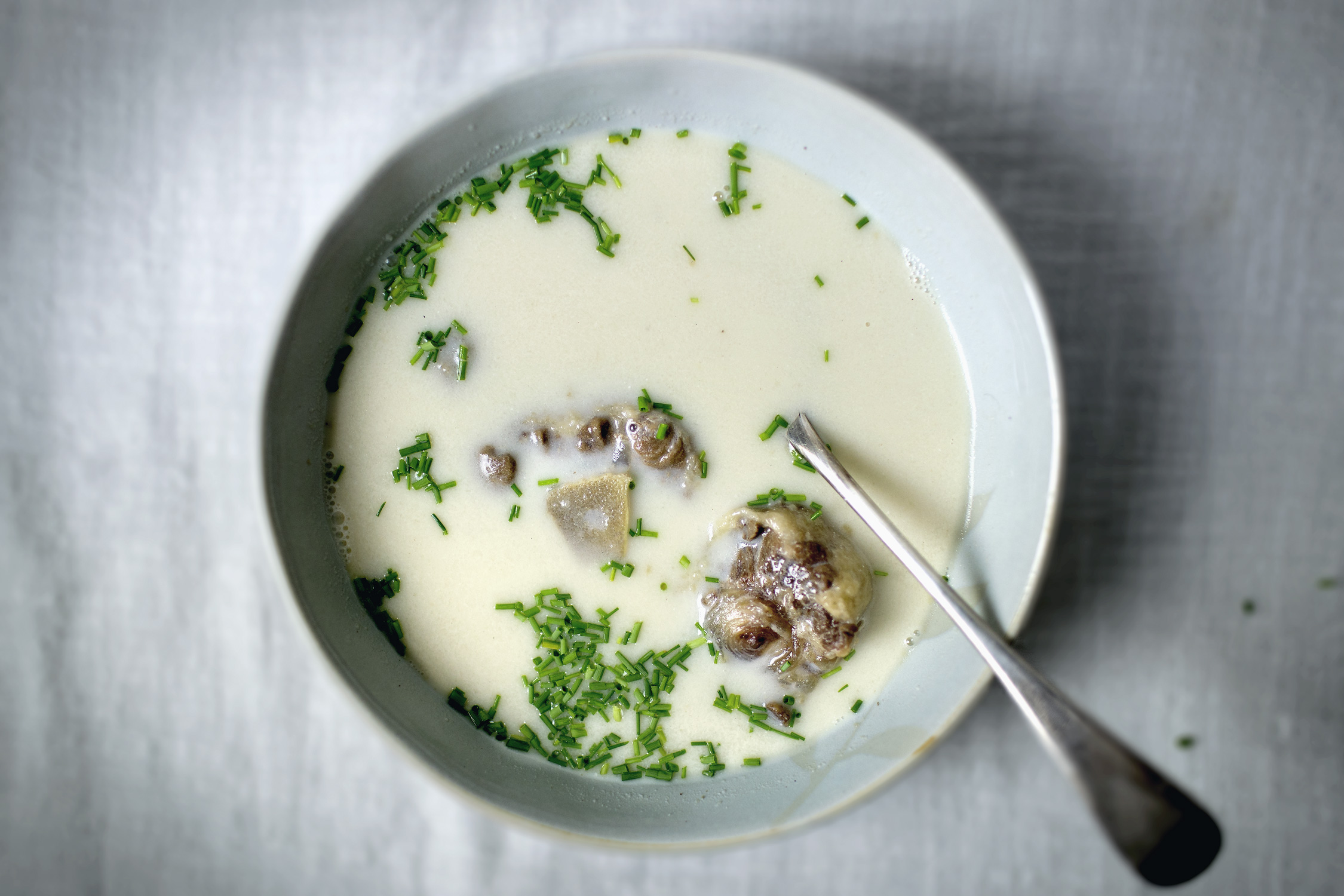ALMOND SOULONGTANG /KOREAN OXTAIL SOUP
ASIAN SOUTHERN ALMOND MILK,
WITH THAT DISTINCTIVELY FLORAL AROMA AND REMEDIAL RICHNESS THAT WORKS SO FLAWLESSLY WITH THIS TRADITIONAL SOUP, ELEVATING IT TO NEW HEIGHT
I’ve always pondered about almond, well, not specifically about what this word would mean to most of you, which is probably something like American sweet almond, with narrow leaf-drop shape and minimum coolosity inside what is already not-so-exciting trail mixes.
But I’m talking about what is also called “almond” in Asia. Same name, but entirely different characteristics. Asian almond is much smaller with flat heart-shaped profile, but most importantly, an immediate, elegant and floral scent separates itself from the American variety. You could identify that scent/flavour if you are familiar with almond extracts or some marzipans, unique, subjective, and hard to describe. Why both “almond” and yet so different? Well, because they aren’t the same thing to begin with.
American almond is the kernel of a fruit in the drupe family (Prunus dulcis) (see comments for extra information), whereas Asian almond is actually the kernel of apricot. And it’s extremely important to note that in Asia, even the word “almond” comes in two different, and mostly, dangerous distinctions. Southern almond (Prunus armeniaca L.), sweet, floral and nourishing, is the common ingredient we consume in both dessert or savory dishes. Whereas another variety called northern almond/bitter almond (Prunus armeniaca Linne var. ansu Maximowicz), smaller with an even stronger, bitter “almond-y” scent, is actually poisonous if ingested in large-enough quantity, and is only used in small amount for medicinal purposes. The reason why almond extracts taste/smell like Asian almond and not American almond, is because the extracts are mostly made from bitter almonds (but relax, the extracts are treated in order to neutralize the poisonous elements).
So, a bit of some boring, nerdy botany talk. But how does it all apply?
Deliciousness is what.
Have you heard of soulongtang? The Korean ox bone soup that is milky white as a result of hours and hours of rolling boil, reaching a state of emulsion between liquid and gelatin, protein and other minerals – very much the same as tonkotsu ramen broth. Well, that process is interesting to replicate, if you are one such individual with admirable persistence and disposable free time. But in this rare reality where convenience and optimal result can actually coexist, we can achieve this rich and deeply nourishing soup in a fragment of the time it takes, by adding almond milk. But not just any other boring, fake-ass, vanilla-falvoured almond milk sold in cartons please. I’m talking homemade Asian southern almond milk, with that distinctively floral aroma and remedial richness and depth that, exceeding my own expectation, works so flawlessly with this traditional soup, elevating it to new height.
There’s nothing else I want more than the warmth and comfort of this dish, in this dark and uncertain time that is January 2017. Hope you agree.



